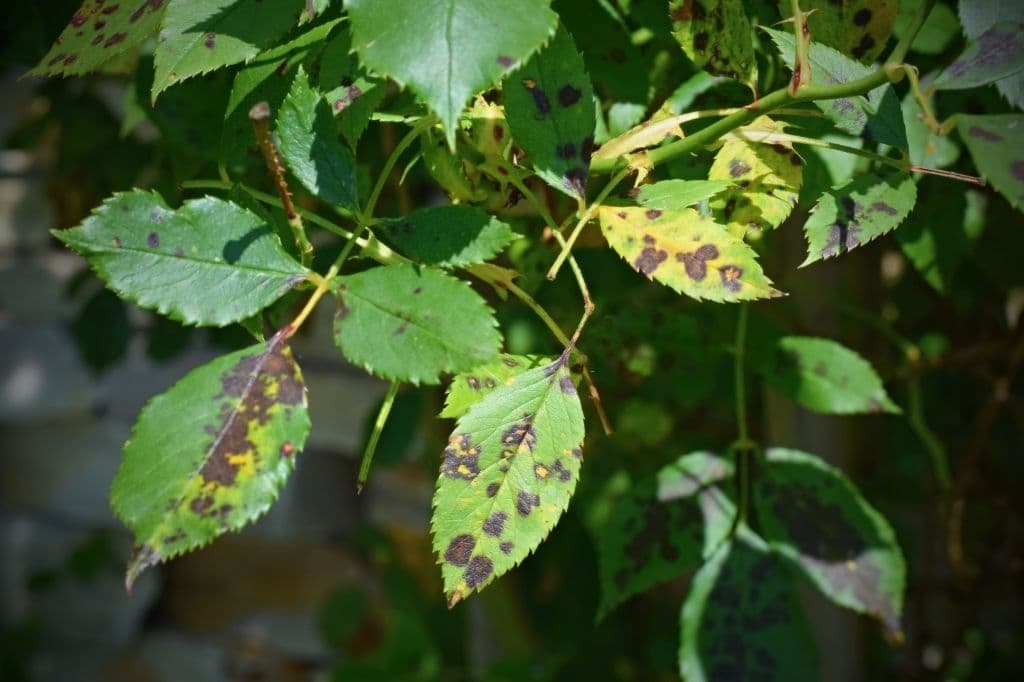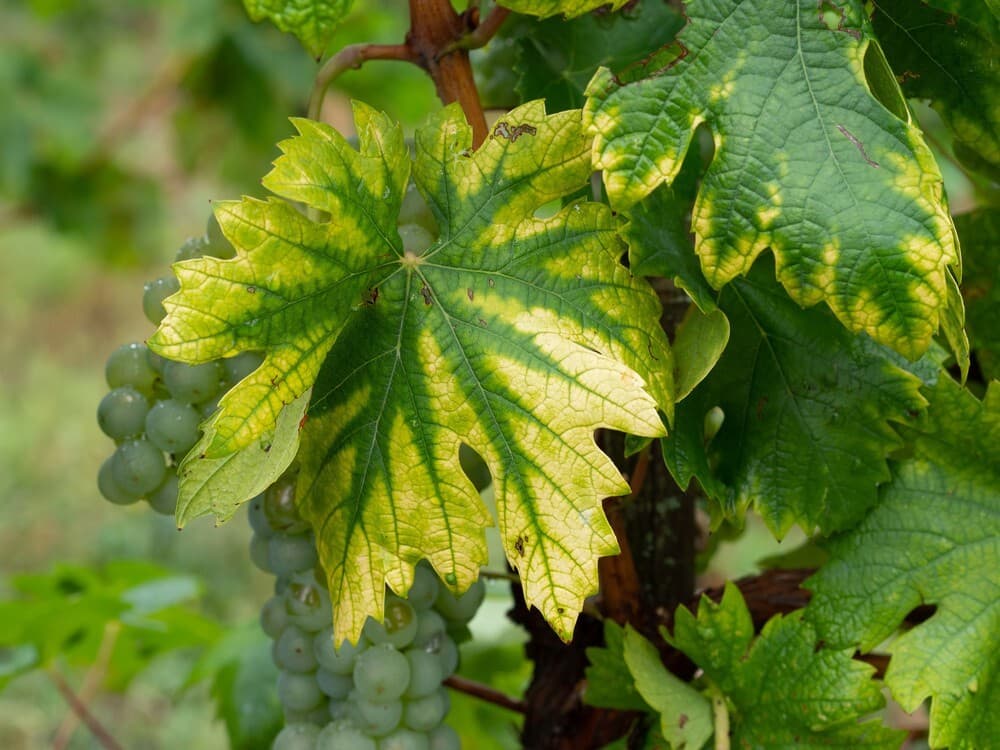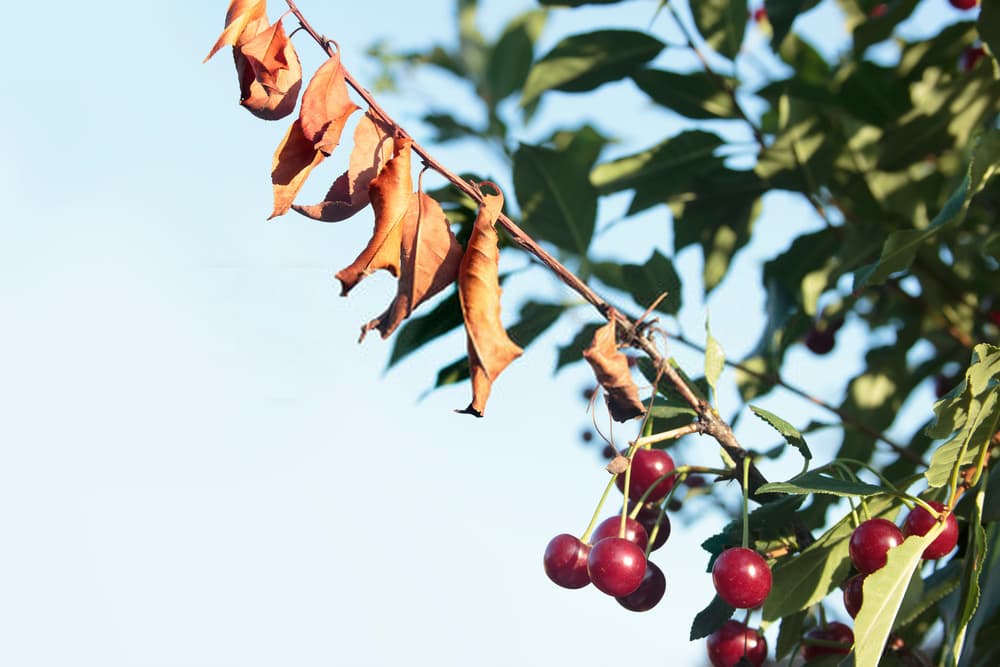6 Common Tree Diseases In The Midwest
Trees are great for the environment, provide shade, and add charm and character to a property. Mature trees also significantly increase a property’s value.
For these reasons, taking great care of your trees is crucial. One way to do this is by being aware of some of the tree diseases common in your area. This allows you to know when something is wrong early enough so that you can engage an arborist in good time.
Tree diseases are caused by bacteria, fungi, insects, viruses, and environmental and climatic conditions.
If you have a property in the Midwest, here are the most common tree diseases.
In this article:

1. Leaf Spots

Leaf spots affect the foliage of shade and ornamental trees. This is often a fungal infection, though some are bacterial.
Leaf spots are very common and, fortunately, do not cause significant damage. Often, these do not require any mitigating measures like spraying either. The major worry with leaf spot disease is that it can cause leaf loss.
This is mostly a concern for younger trees than mature ones. The latter tend to have plenty of leaf real estate, and some loss is unlikely to create any significant damage.
However, get treatment if your trees suffer moderate to complete leaf loss for two to four consecutive years as such loss can lead to stunted growth. It can also leave your trees more susceptible to opportunistic pathogens and infections.
2. Root Rot

Root rot is a disease that causes decay in the roots’ system. Therein lies the main challenge with this disease.
While some diseases will show symptoms on the bark, branches, and leaves of trees, root rot is underground and away from plain sight. This makes it much more difficult to diagnose, and once you do, it might be too late to save the tree.
When healthy trees begin losing their appeal but show no signs of physical damage, root rot is a common culprit.
Tree rot results from a fungal infection or poorly drained soil. Poorly drained soil can lead to water oversaturation. This makes it difficult for the roots to get oxygen. It also dampens the ground around the roots.
This retained moisture encourages fungal spores to reproduce. An overgrowth of fungal spores can cause a fungal infection.
Related: How to Spot and Treat Fungal Diseases
3. Fire Blight

Fire blight often affects crabapple, apple trees, and mountain ash trees and can be damaging if not caught and treated early.
In early spring, fire blight causes leaves to turn yellow and can kill booms in a couple of days. If untreated, your leaves and branches start to look burnt within a few weeks.
It does not end there. A tree with fire blight will try to repair itself. To do this, it produces and oozes a liquid. This liquid resembles sap, but is actually a bacteria.
Once a tree with fire blight starts to ooze, it becomes highly contagious and can infect other trees on your property. This becomes uncontrollable because insects like pollinators are attracted to the sweetness of the bacteria and easily and quickly spread it to other trees and plants.
Trees with fire blight appear to have water-soaked flowers and flower clusters. These then droop and shrivel before turning black or brown. These black or brown leaves then remain attached to their branches through the season.
If you spot this and some oozing, it’s advisable to get treatment for the affected trees.
4. Apple Scab

If you have grown apple trees on your property, you have likely seen blemishes or scabs on your apples. This is commonplace and not too worrying.
However, if your apples begin deviating from what you are used to by having more blemishes or not having as many flowers, you might have an apple scab problem. The same goes for then the apples reduce in size. The leaves on the affected trees might also develop olive green to brown spots.
Being a fungal disease, proper timing of spraying with fungicides is central to preventing the disease. However, if it’s already present, ensure to have the affected trees treated promptly as it spreads easily and can lead to a devastating tree loss.
5. Iron Chlorosis

Iron chlorosis refers to the yellowing of tree leaves due to insufficient chlorophyll. Aside from yellowing, you might also notice a network of dark green veins on the leaf.
As the disease progresses, the entire leaf might turn yellow or white, with the outer edges scorching or browning as leaf cells gradually die.
While the reasons behind iron chlorosis are complex, alkalinity has a lot to do with it. Most areas of the Midwest have highly alkaline soils. Unfortunately, highly alkaline soils can make it harder for plants to absorb iron. However, plants native to high alkaline soils do not have this problem as they are naturally adapted to extracting iron from the soil and using it efficiently.
Because correcting iron chlorosis is difficult, it’s often advised to carry out a soil test before planting trees. This helps prevent the problem altogether.
Fruiting trees with iron chlorosis will yield smaller, often bitter fruits. If it persists, entire limbs or the whole tree might die off.
6. Bacterial Leaf Scorch

This is a systematic bacterial disease that invades the xylem of the affected tree. The xylem is responsible for nutrient and water conduction, and their inability to do this efficiently is bound to be problematic.
Once a tree gets infected, spittlebugs and xylem feeding leafhoppers easily spread the bacterium to other trees. The first telltale sign of leaf scotch is the premature browning of tree leaves in mid-summer. The browning becomes more pronounced towards later summer and fall.
You will notice leaf margins turning brown and moving outwards and may start dropping off. This becomes gradually worse over 3 to 8 years until the entire tree turns brown.
Bacterial leaf scorch is unfortunately not treatable.
Get Ahead of Things
It takes a lot of effort to grow a tree to maturity. This explains the loss felt when you have to chop one down or lose a tree to disease.
Be on the lookout for any changes on any tree on your property. Catching a disease early provides better treatment outcomes. When untreatable, it ensures you take the necessary precautions to prevent the disease from affecting more trees.

